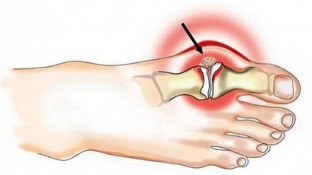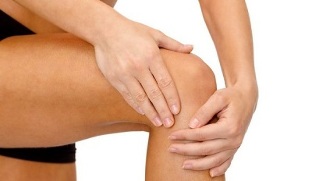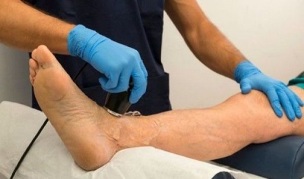Arthritis and osteoarthritis are quite common today. Many people confuse these diseases because of the similarity in their manifestation. In fact, however, both diseases are very different from each other. You can understand the difference between diseases only if you study their characteristics.
Types of pathology

It is impossible to diagnose joint disease based on pain alone. Almost every disease of the musculoskeletal system is accompanied by pain.
The following diseases are the most common:
- Arthritis,provoked by inflammation of the articular surface. This inflammation occurs for various reasons. The primary form develops against the background of a number of diseases with gout, septic and rheumatic nature.
The secondary form can develop after systemic lupus erythematosus, borreliosis, arthropathy.
- Osteoarthritisprovoking the destruction of cartilage and part of the bone located below.
Primary usually develops for no reason. It usually occurs in the elderly and affects the surface of large symmetrical bone joints.
The secondary form of the disease occurs after suffering a serious illness. Often the development of this form is caused by a genetic predisposition.
Inflammation of large bone joints (shoulder, knee) is often caused by overweight, intense physical activity, past injuries and endocrine diseases.
- Arthropathy - a violation of the integrity of the joints as a result of complex diseases.
- Tendonitis is an inflammatory process that occurs in the tendons.
- Enthesitis - structural changes at the junction of soft tissue with bone.
- Bursitis is a lesion of the bursa.
- Capsulitis - inflammation and disruption of the integrity of the joint capsule.
How to distinguish osteoarthritis of different severity from arthritis? You should know that the disease arthritis and osteoarthritis have different manifestations, which determine the treatment of arthritis.
Difference in features

How is arthritis different from osteoarthritis? Signs that indicate the presence of a particular disease. The signs of arthritis and osteoarthritis of the knee are specific.
What is osteoarthritis? A chronic disease that is destructive in nature. The peculiarity of the disease is that it affects the cartilage and is irreversible.
The disease most often affects people of both sexes over the age of 60. That is, osteoarthritis of the knee joint is considered a disease during which large-scale destruction of cartilage occurs. Initially, a large joint, such as the ankle, is affected. Special attention should be paid to its treatment.
When rheumatoid arthritis touches the hands or feet, the inflammation is found in several bone joints at the same time. The main difference between osteoarthritis and arthritis is that the second disease is accompanied by inflammation of large bone joints - knee, shoulder.
Arthritis has a number of secondary symptoms. In particular, it provokes swelling of the joints, redness around them. In addition, the patient has a fever that blocks motor function. One of the factors can provoke disease: allergies, infectious diseases, metabolic disorders and injuries.
In case of an inflammatory process, a person's motor activity is impaired. In particular, the range of motion is significantly reduced. This restriction applies both to those movements that are performed independently and to those for which a person needs help.
Inflammation affects one or more joints at a time. Usually this phenomenon is accompanied by pain without a clear place of their localization, and the articular surface of the ankle joint or foot remains intact.
It is worth remembering that the main danger of this disease is that changes occur not only in the bone tissues, but also in other organs, such as the digestive, visual and excretory organs. The changes can also affect the dermis.
The disease affects people of all ages, but most often the disease is diagnosed in women aged 35-50 years.

As for pain, arthritis accompanies it all the time. In the presence of osteoarthritis, the destruction of bone tissue is usually asymptomatic without causing pain, so that the patient does not notice it.
In the first case, the disease manifests itself in some way. It is accompanied by weakness of the body, sometimes psoriasis. In the second case, all inflammatory changes occur without external signs.
Arthritic inflammation is manifested externally by swelling of the soft tissues. They are also characterized by paralysis of the joints. Changes of different nature occur smoothly and practically do not manifest themselves. However, they are characterized by a specific "dry" crisis that occurs as a result of joint wear.
What is the difference between arthritis and osteoarthritis? The second provokes the destruction of cartilage, and rheumatic disease manifests itself as inflammation of bone tissue. These are the main signs by which a person can distinguish arthritis that has affected a person or osteoarthritis.
Difference in symptoms
How does osteoarthritis of different origins differ from arthritis? Osteoarthritis and arthritis differ in the symptoms of the disease. Knowing them is very important because the symptoms and the treatment are interrelated.
Arthritis and osteoarthritis of the knee show similar symptoms. However, you can tell them apart. Arthritis and osteoarthritis of the knee and others are manifested by severe pain. However, the nature of the pain is different. In osteoarthritis, the patient experiences pain when moving or due to heavy strain on the knees. It hurts, the attack lasts a long time.
The first stage is characterized by mild pain, which is why the disease is often detected only at the time of diagnosis.
In the next stage, the patient experiences pain even under light stress.

In the third stage of its development, the disease is considered neglected. Pain can occur even when there is no movement at all. After changing the position of the joint in a comfortable way, the pain subsides.
The disease of the arm, shoulder or hip joint is characterized by sharp pain that does not subside at all. Often the onset of pain begins early in the morning. The symptoms of arthritis and osteoarthritis are different. You can find out if arthritis or osteoarthritis has affected the joints from the presence of cartilage in them. If it is heard, it means that the second disease has hit the bone articulation.
Osteoarthritis of the knee joint or other large joints may be accompanied by crunch if the cartilage layers have been destroyed and there is direct bone contact.
The disease adversely affects the mobility of an affected joint. For example, osteoarthritis of the knee is accompanied by pain in the legs. Arthritis or another type of arthritis occurs with a feeling of stiffness throughout the body.
How is arthritis different from osteoarthritis? In addition, gonarthrosis occurs without external swelling, but with an external change in the joints.
Osteoarthritis or arthritis affects the joints: what's the difference? In addition to the main symptoms, arthritis is accompanied by hyperthermia, eye inflammation, excessive sweating and weakness.
Diagnostic differences
It is possible to diagnose arthritis of various origins and arthrosis only by determining the cause of the development of this disease. Treatment begins only after determining the level of activity of the disease. In addition, at the time of diagnosis, the treating physician must make a prognosis to prevent a poor outcome.
Treatment of osteoarthritis at different stages and arthritis begins only after a detailed diagnosis.

The complex of medical tests consists of general clinical laboratory tests, X-rays, microscopy and bacteriological examinations.
Diseases of different origins differ in the results of the analyzes performed.
If arthritis and osteoarthritis are not treated in time, it will become impossible to cure. In addition, systemic prevention of arthritis and osteoarthritis should be performed. Do you want to get rid of arthritis and osteoarthritis through effective treatment? Get a basic examination, which includes MRI and arthroscopy.
An informative method that allows you to identify the difference in the manifestations of arthritis from osteoarthritis of the knee is an X-ray.
Differences in treatment
How are arthritis and osteoarthritis treated? Symptoms and treatment of diseases are interrelated. The treatment of arthritis in osteoarthritis is the same, but there are some differences. From a medical point of view, the diseases are different, so the treatment of forms of osteoarthritis and arthritis is safe.
How to treat osteoarthritis and rheumatoid arthritis? Complex therapy will help cure any of the diseases. In both cases, patients with osteoarthritis and arthritis are prescribed treatment, including medication (medicines are prescribed by a doctor). Physiotherapy is prescribed, ie physical therapy, which is especially important for patients with arthritis or a form of osteoarthritis of the knee joint, as it helps speed up healing. In arthritis and osteoarthritis of the joints, treatment includes diets whose menu varies.
Those who want to improve their health "without drugs" often undergo treatment with various folk remedies.
Diseases can last long enough and become chronic. Despite the reason for their appearance, they provoke the development of complications. Therefore, patients must be constantly or for a long time under medical supervision and undergo rehabilitation, the program of which has been developed especially for them.
In order to avoid the development of diseases, special attention should be paid to disease prevention.

- First, it is necessary to treat all diseases of the musculoskeletal system in time and to undergo complete rehabilitation after injuries.
- Second, you need to limit or at least dose your physical activity, eat right and keep track of your weight.
- Third, you should systematically consult a doctor to determine the presence and correct bone deformities in a timely manner.
So the difference between the two diseases is significant. Manifested in symptoms, signs and causes of disease. The nature of the course is also specific. In the absence of timely qualified help, inflammatory processes in bone tissue and cartilage can provoke complications.
Prevention will help to avoid the development of this or that disease, to which special attention should be paid.



































